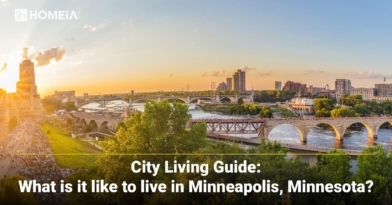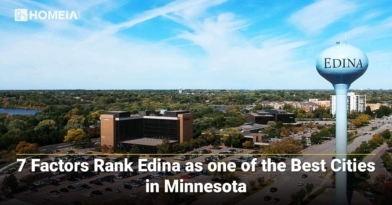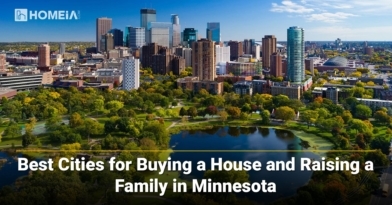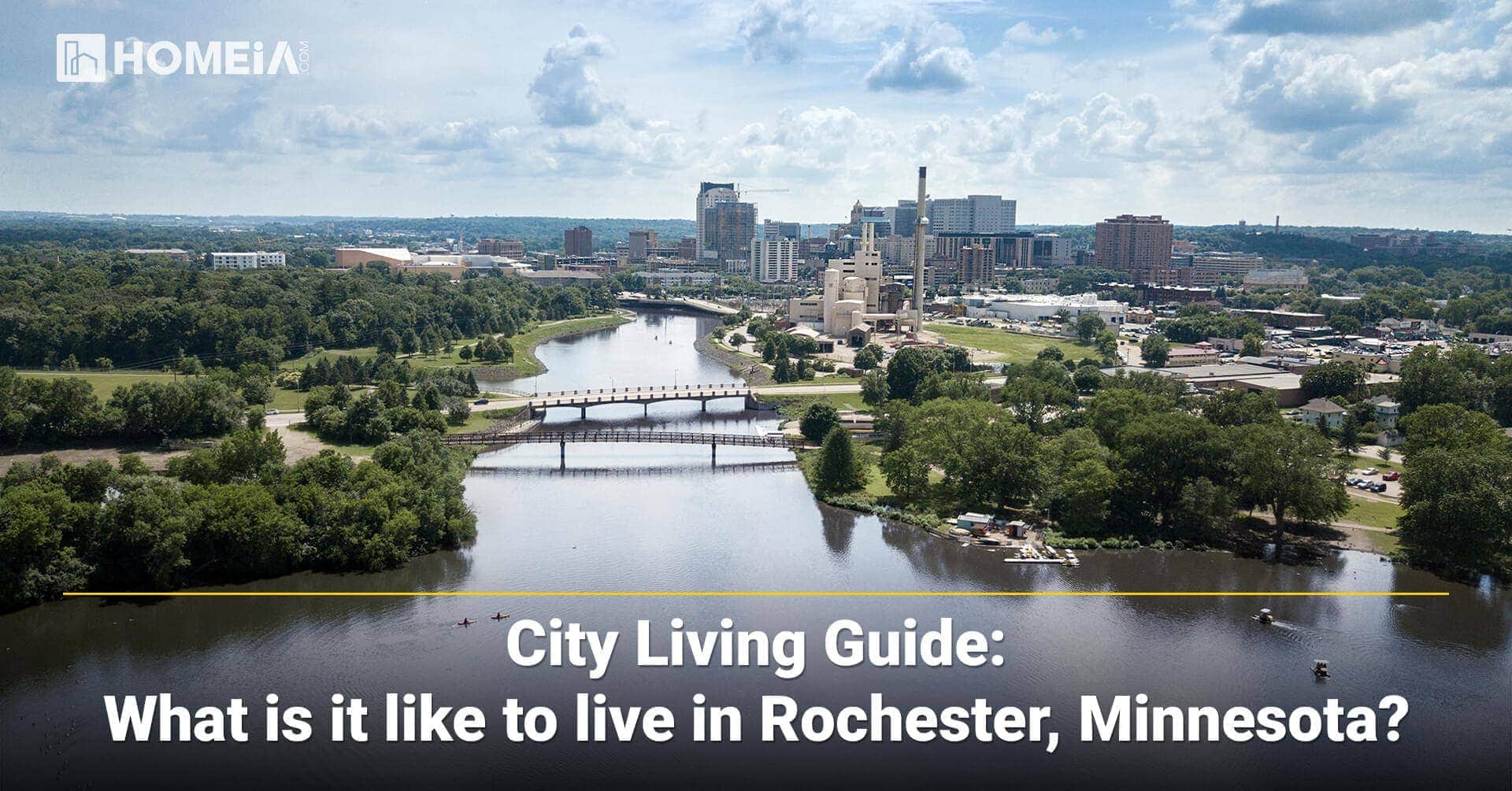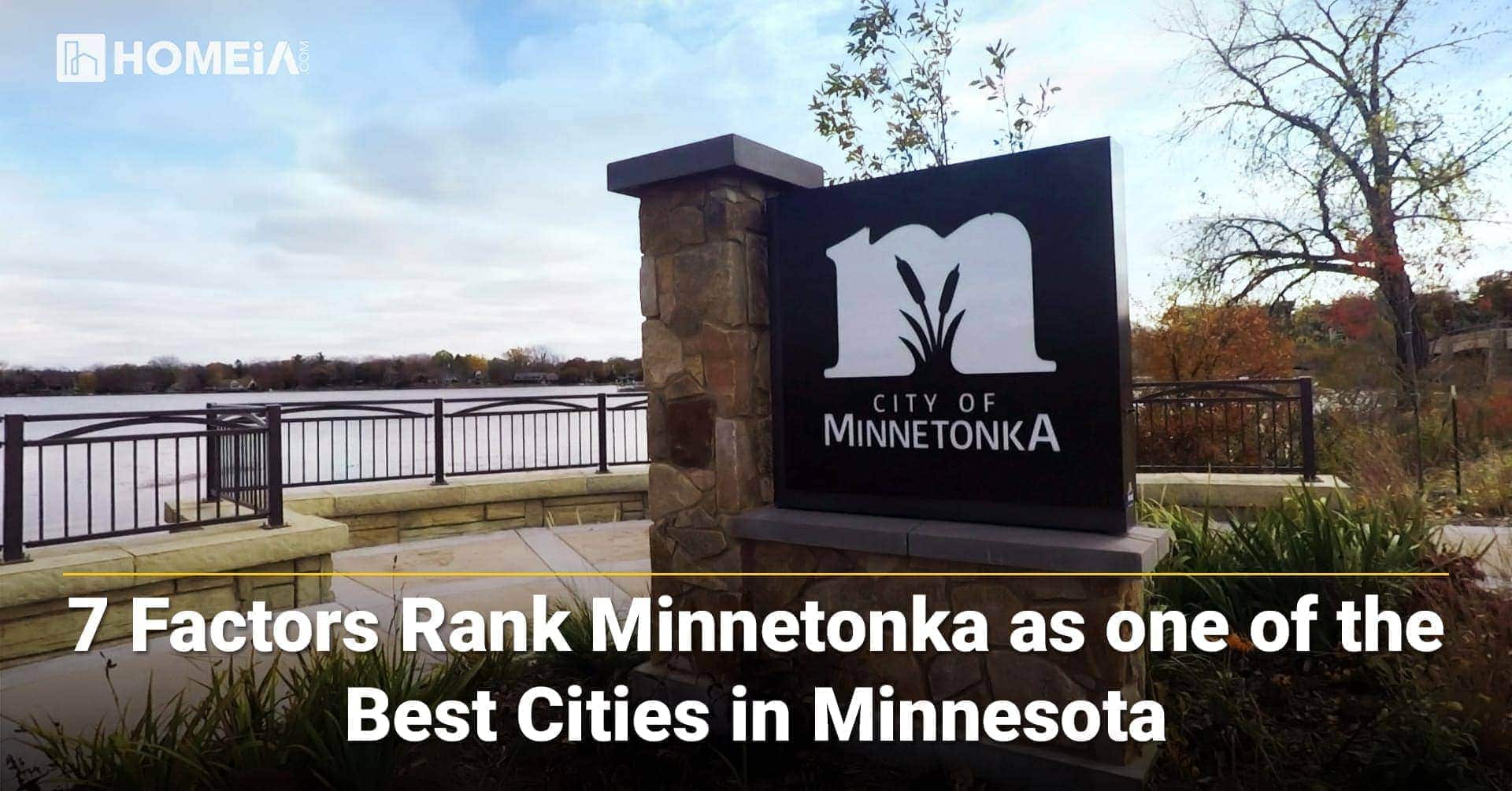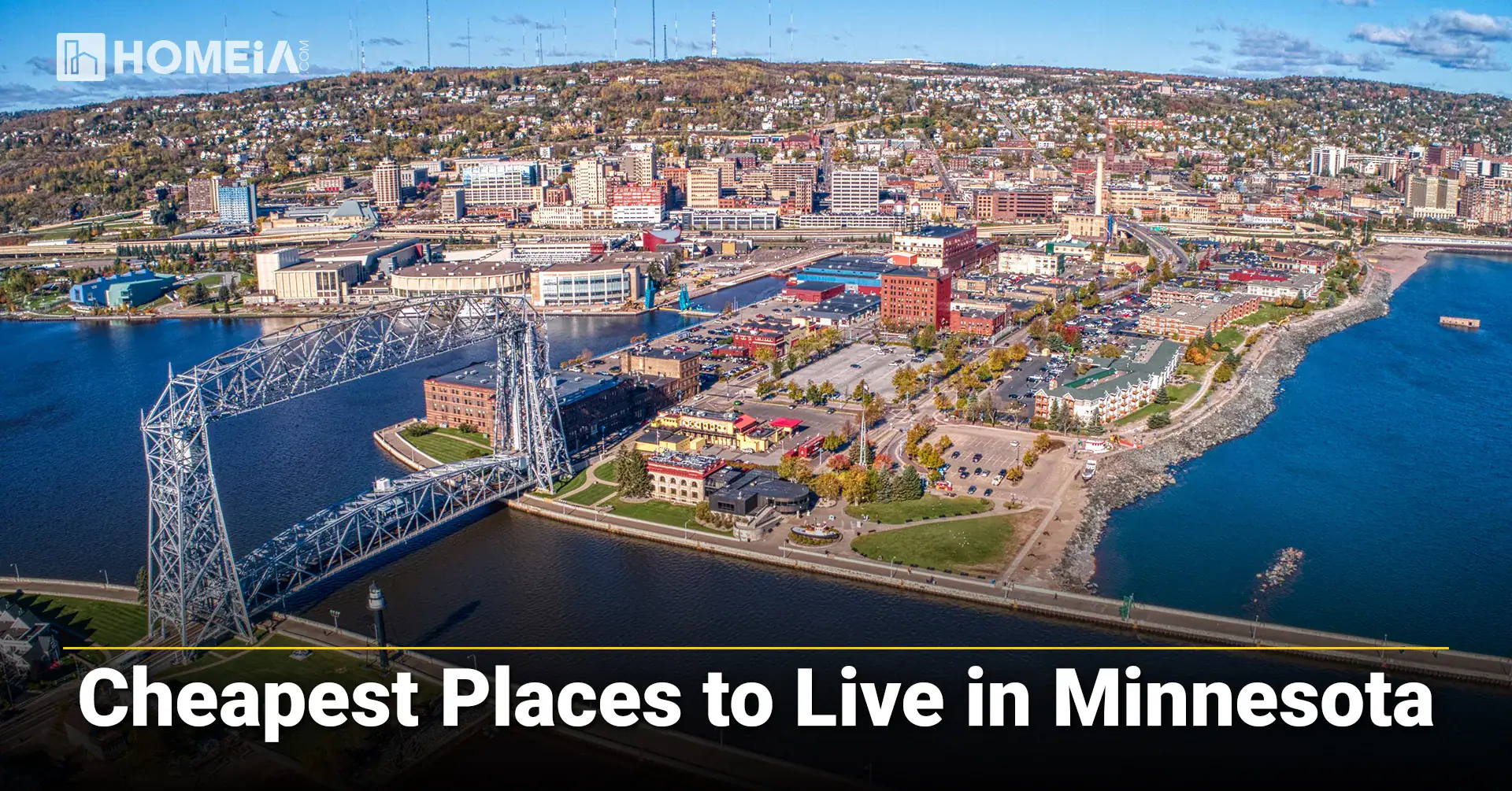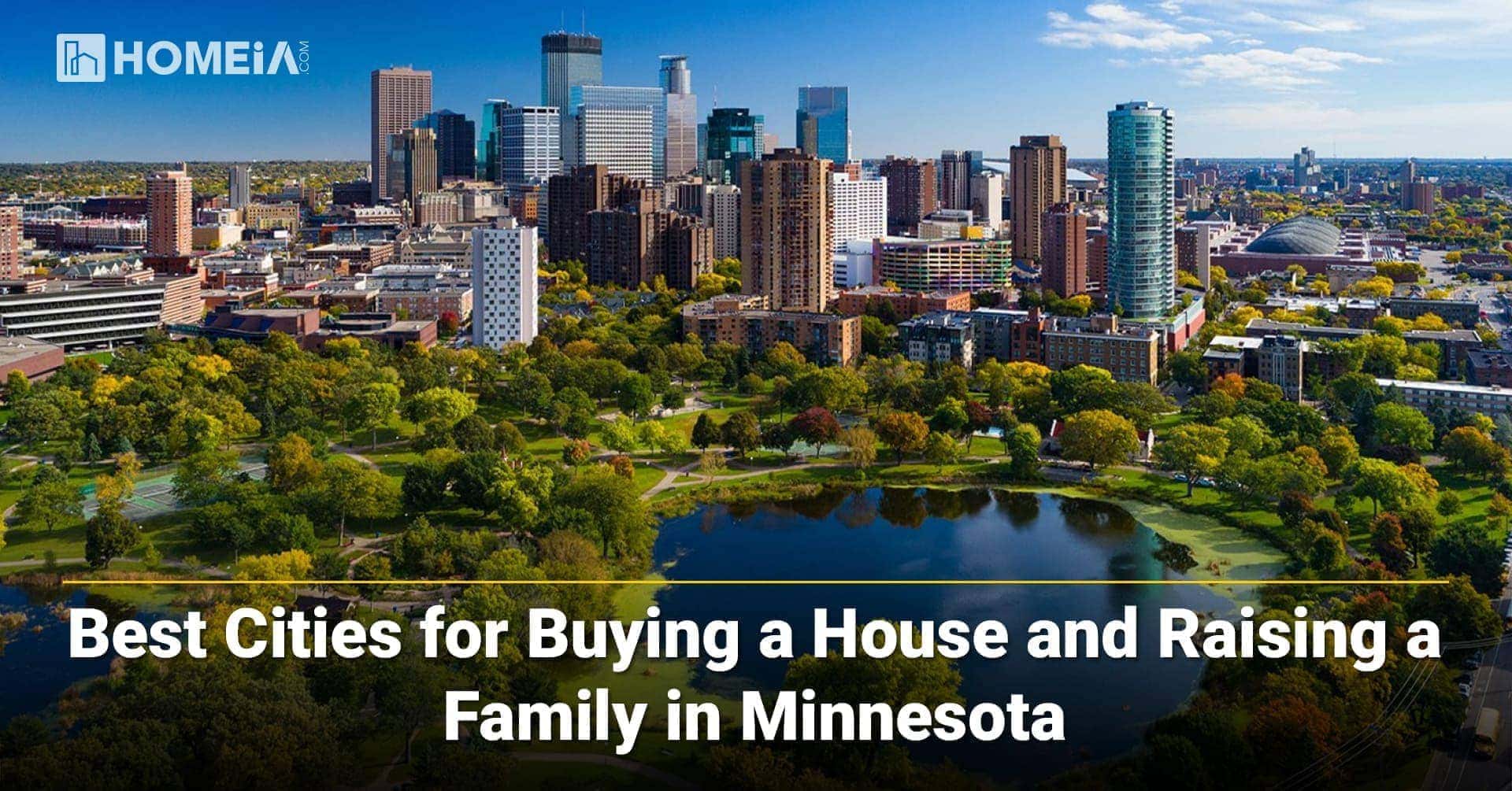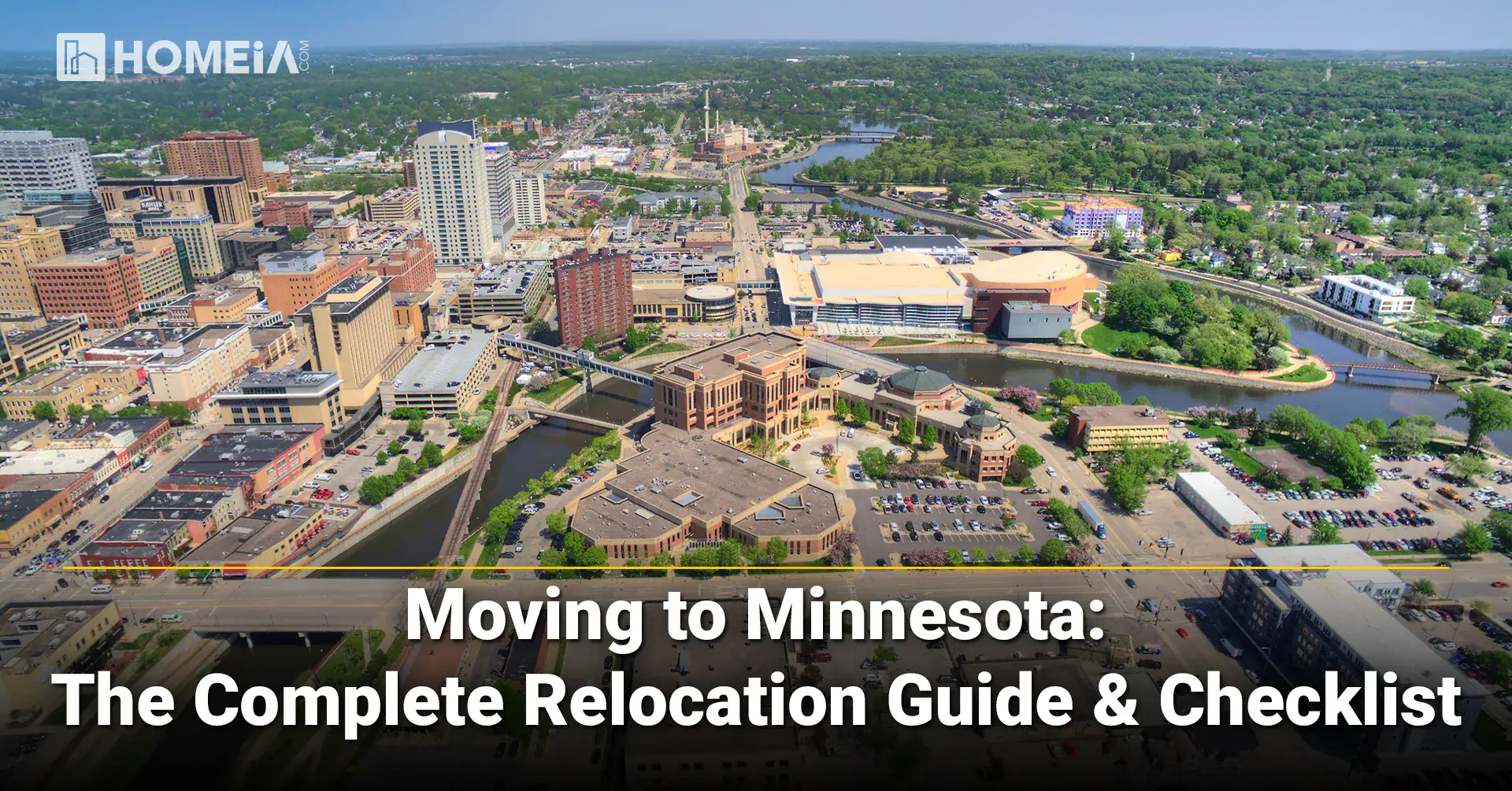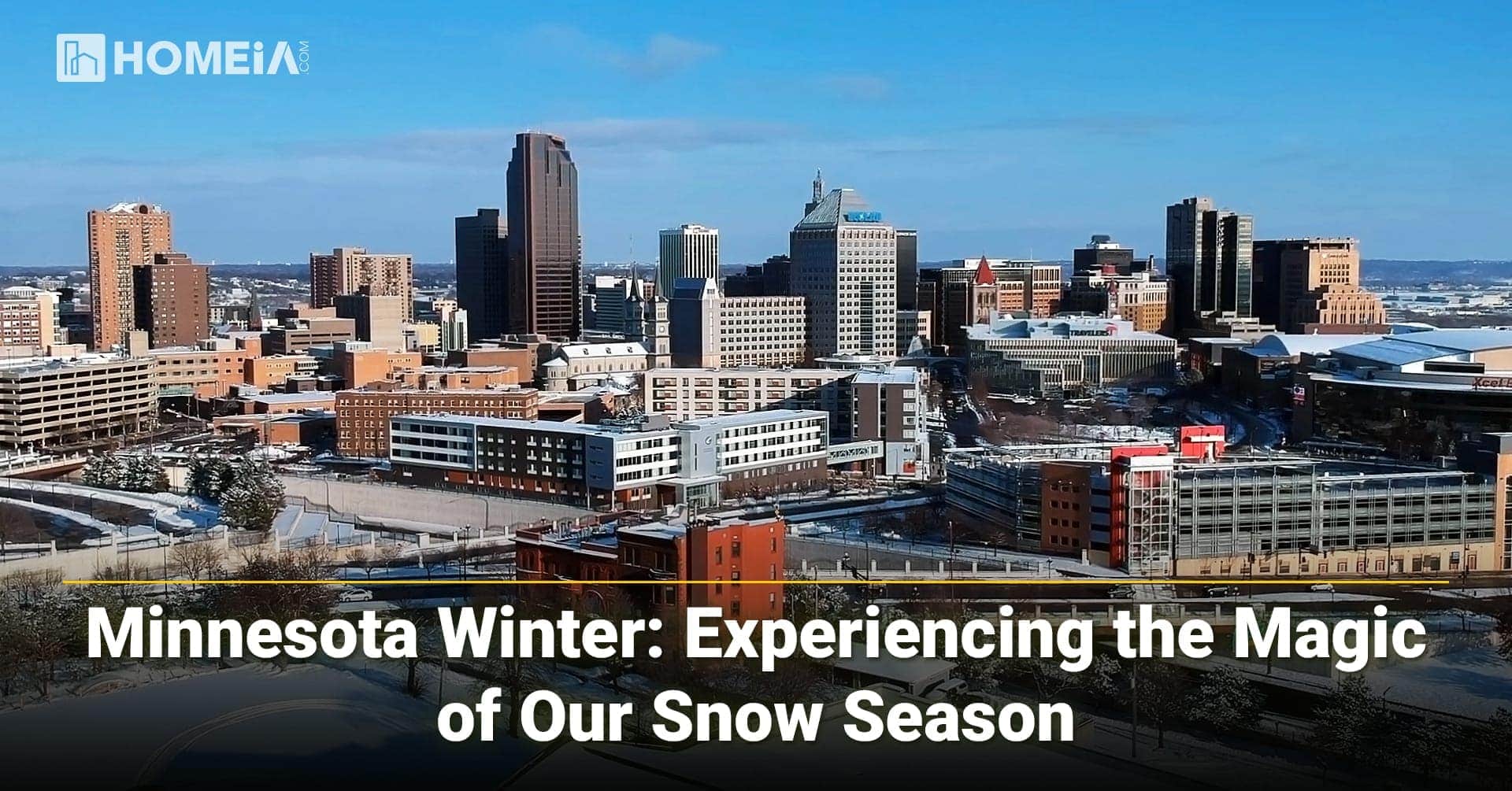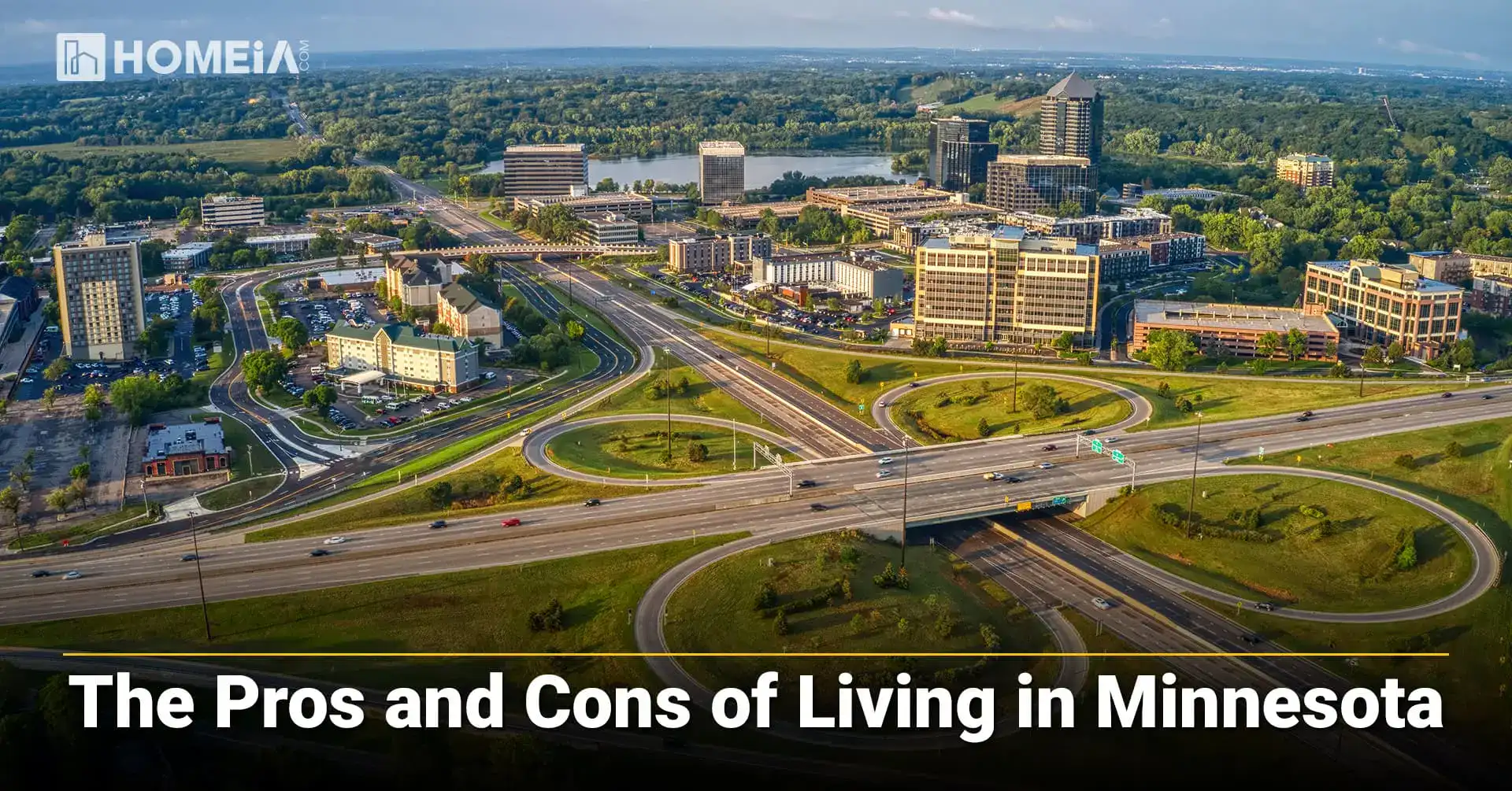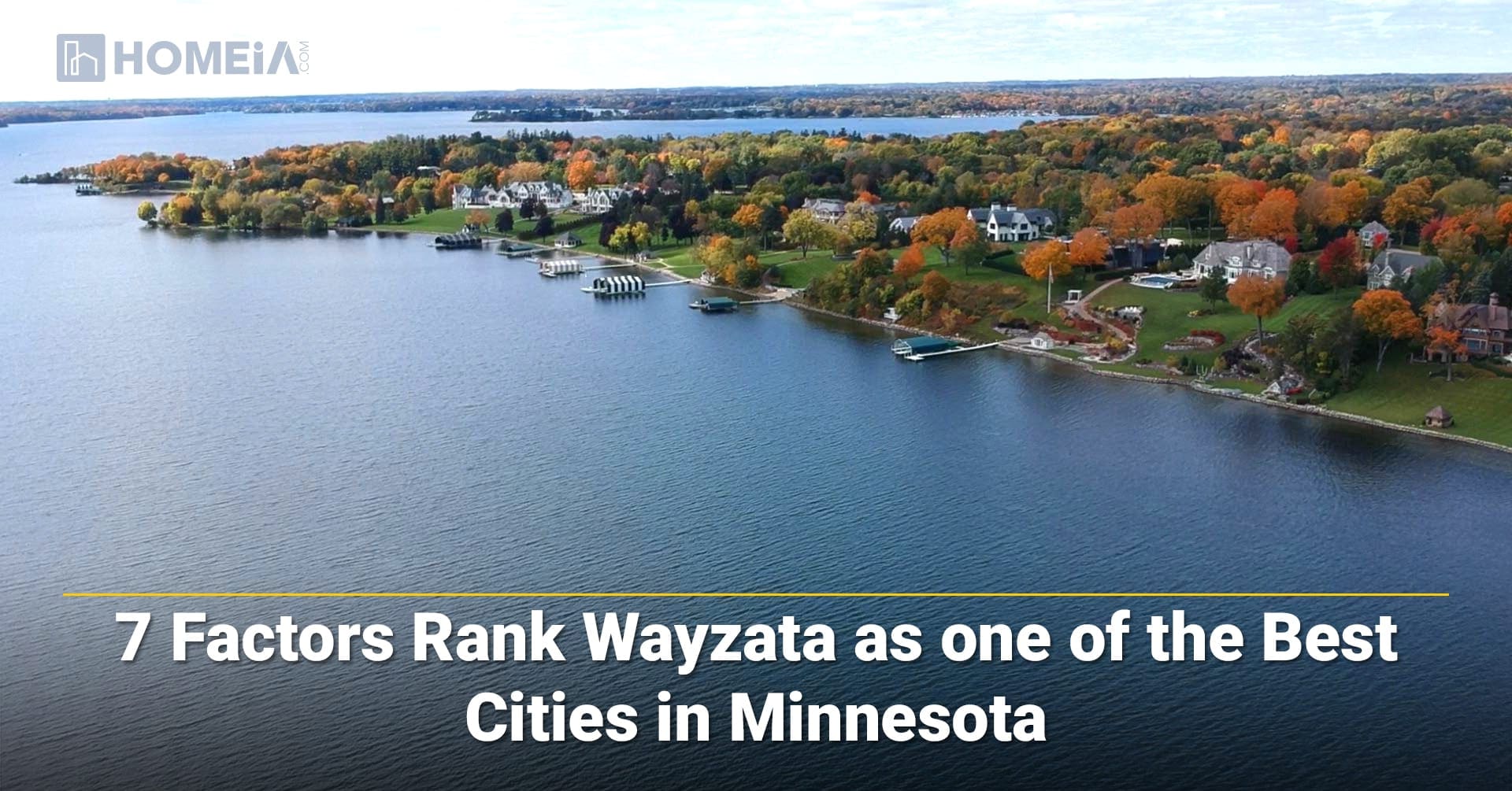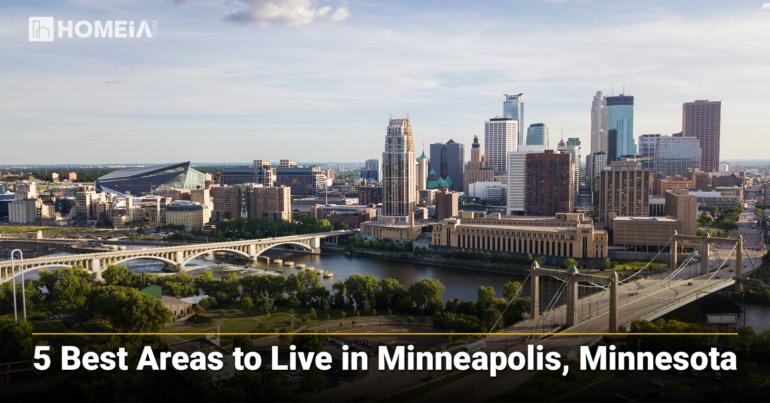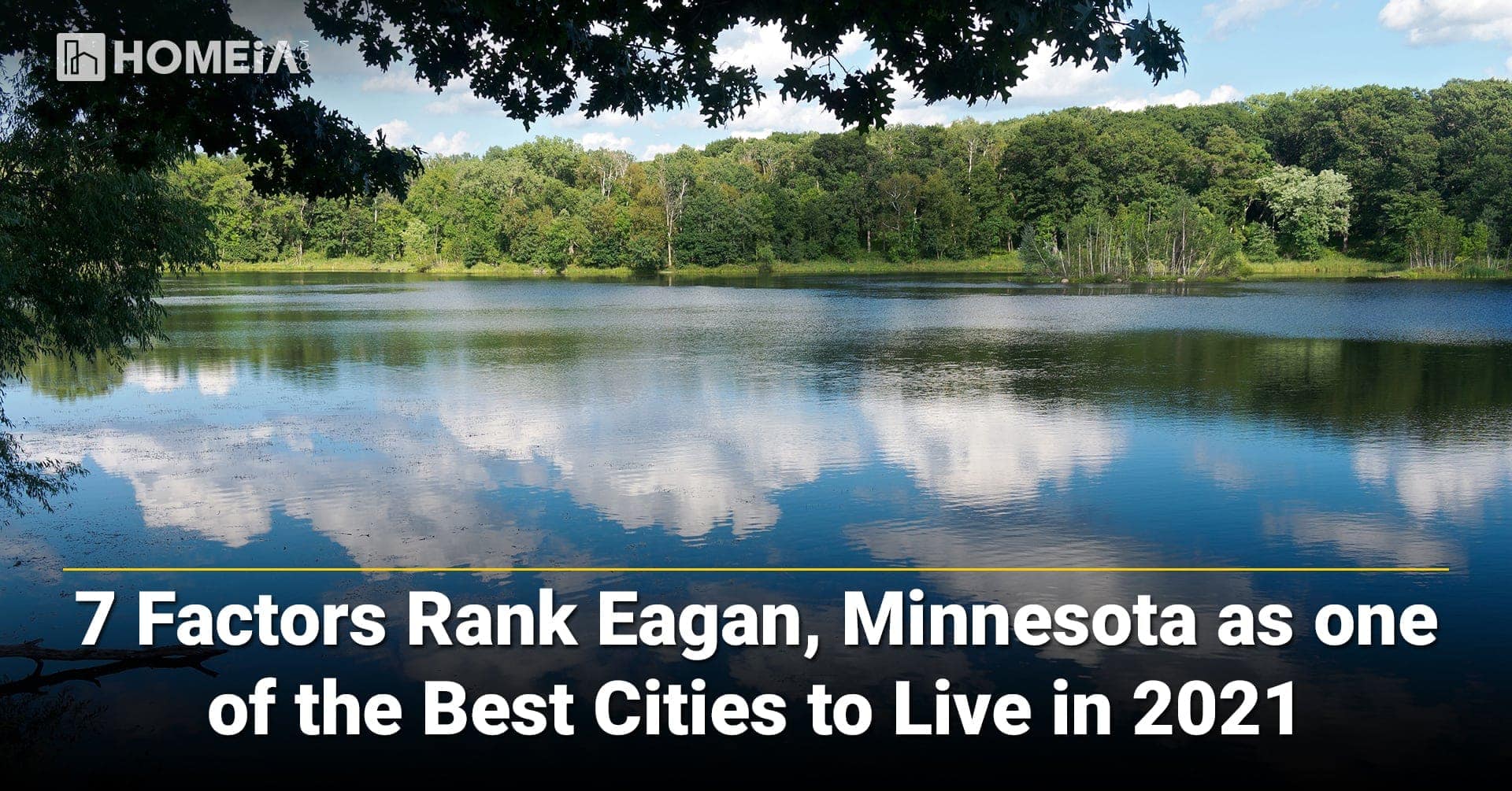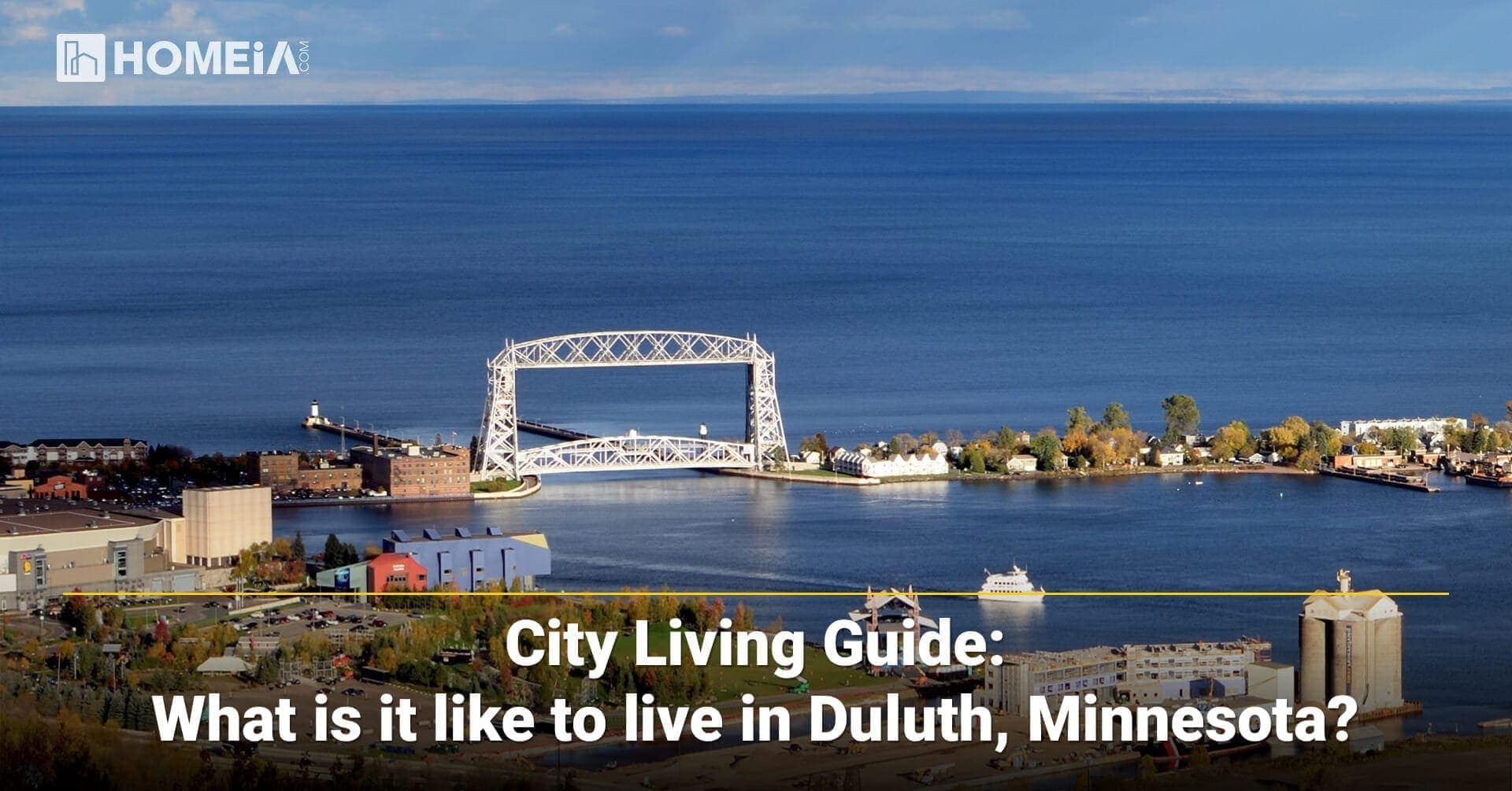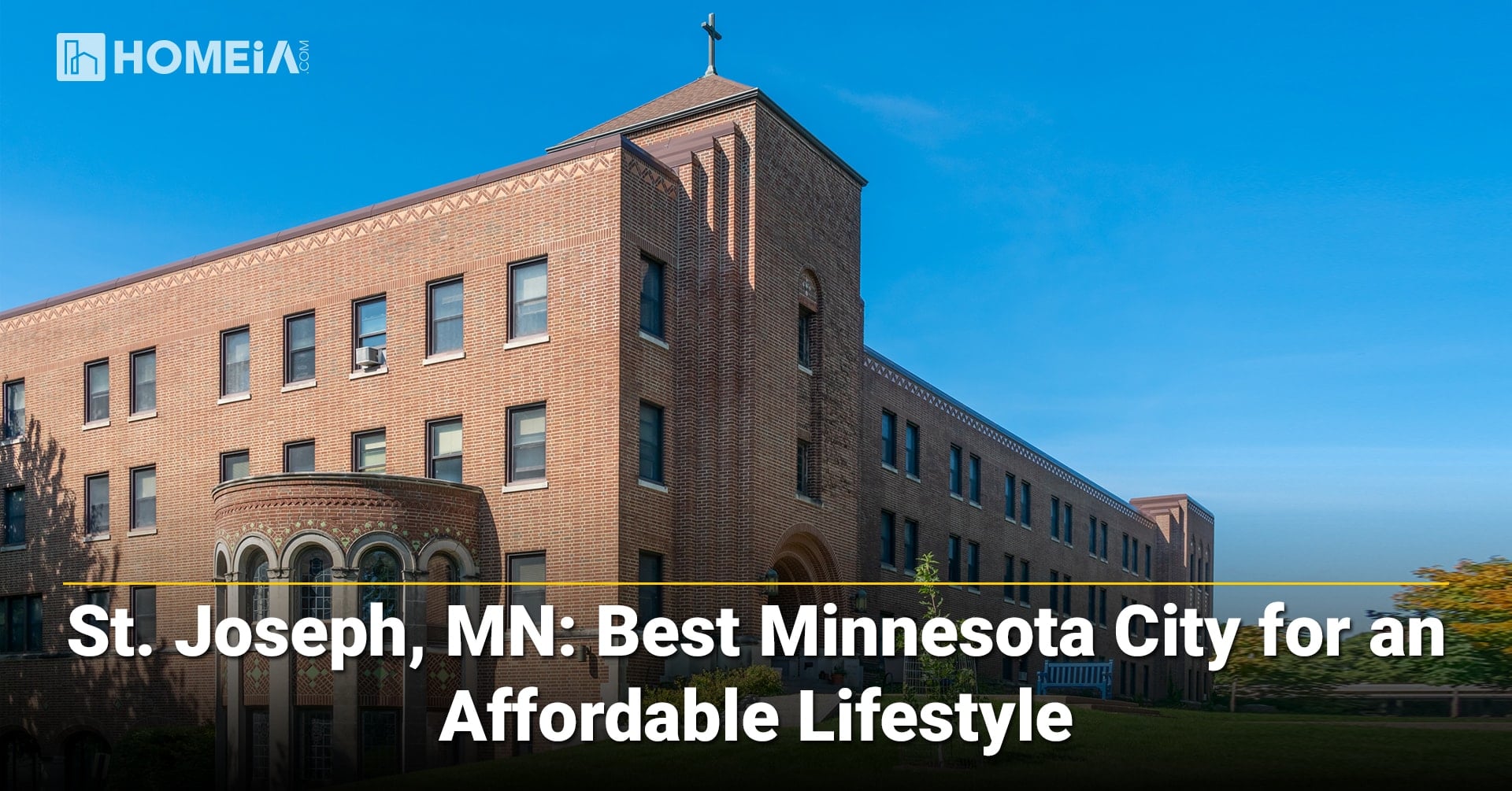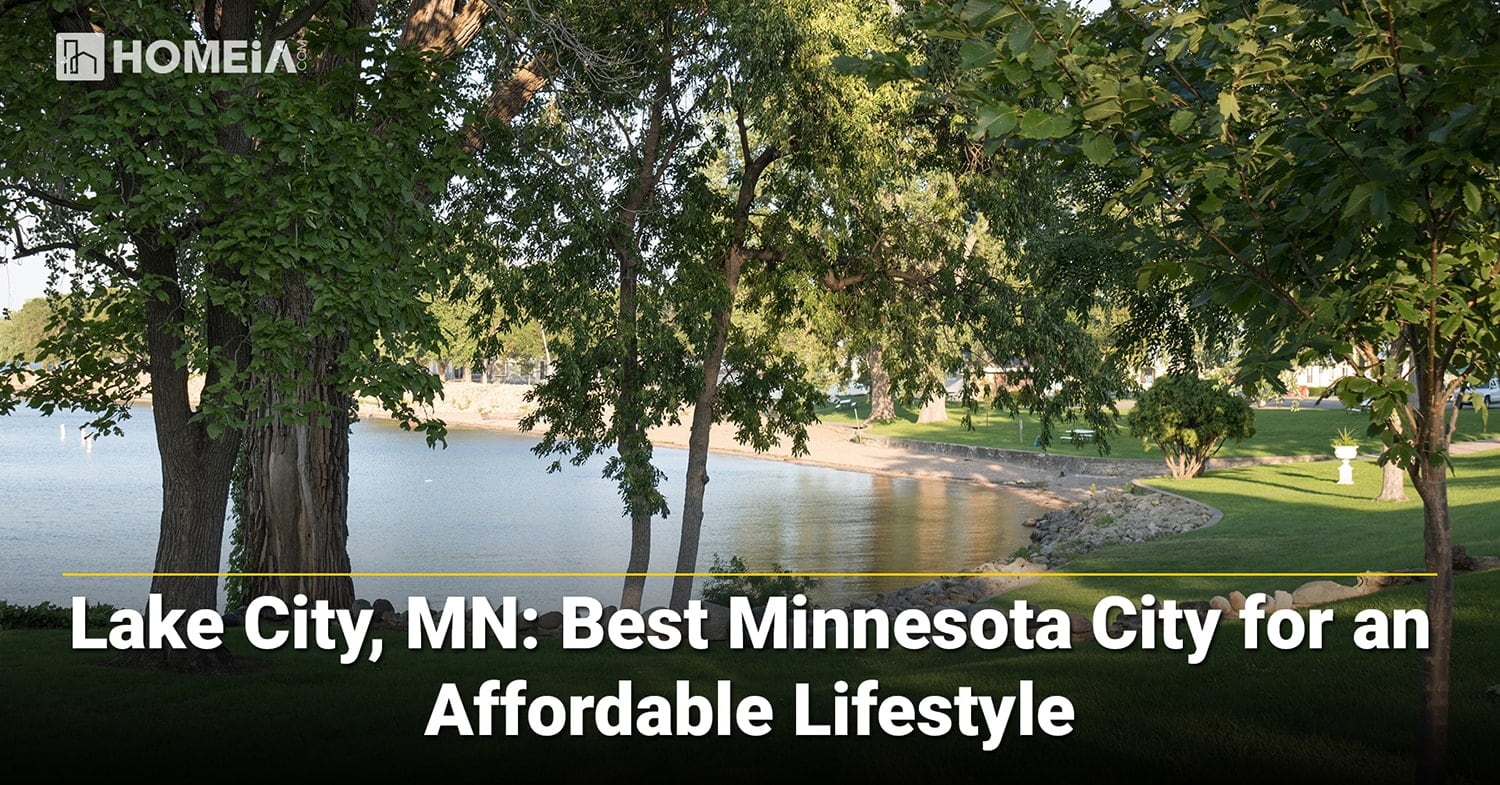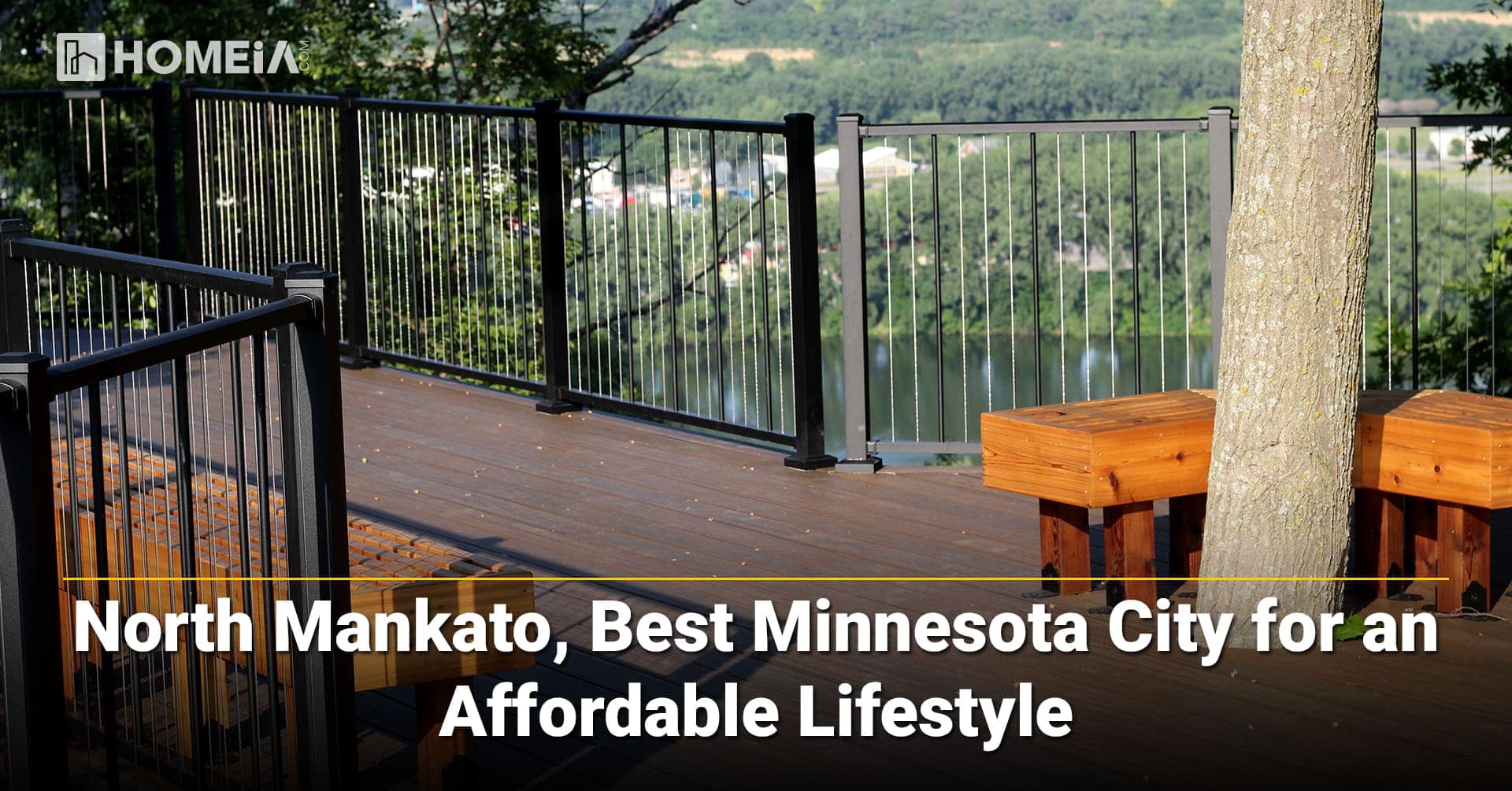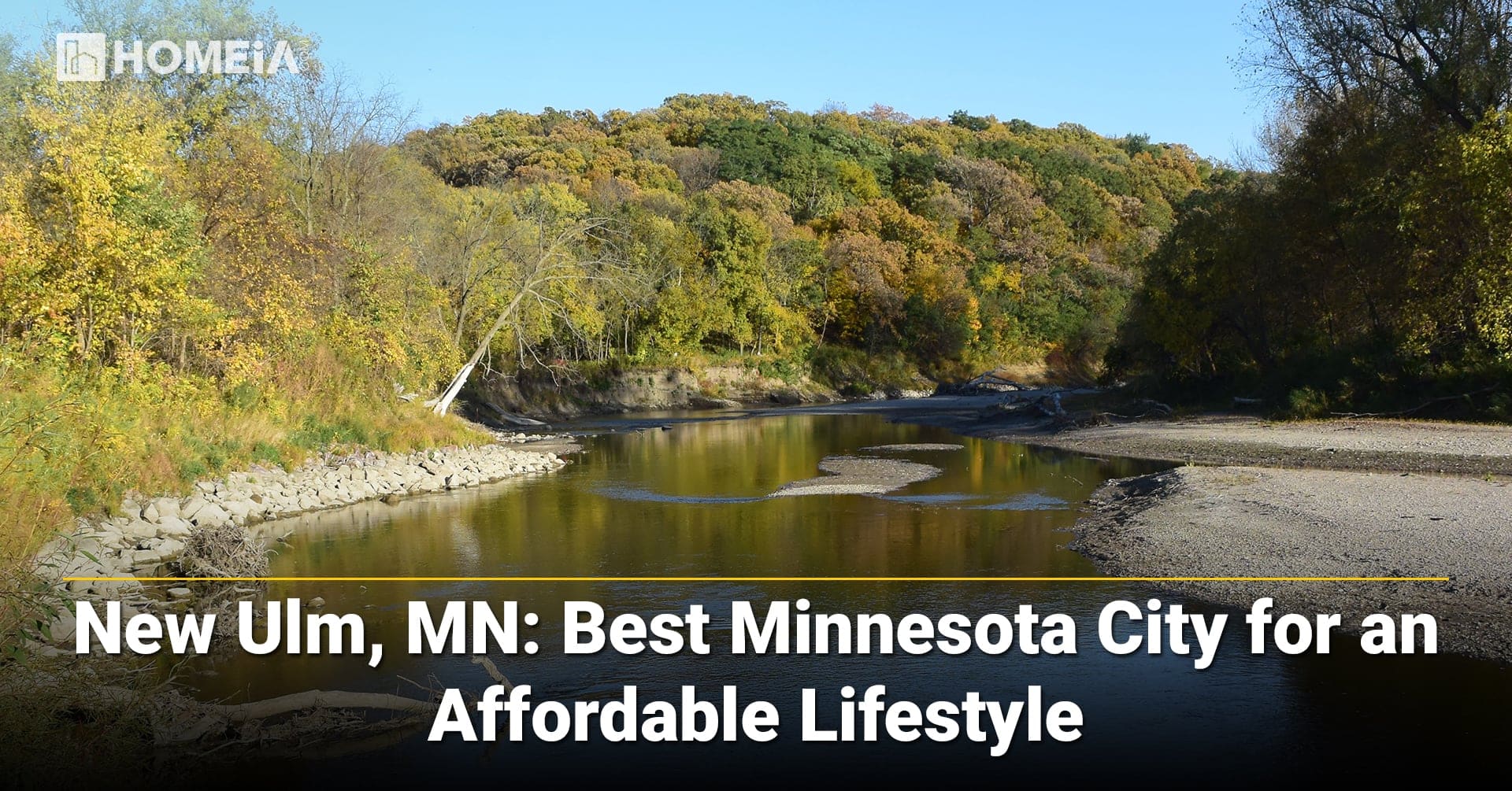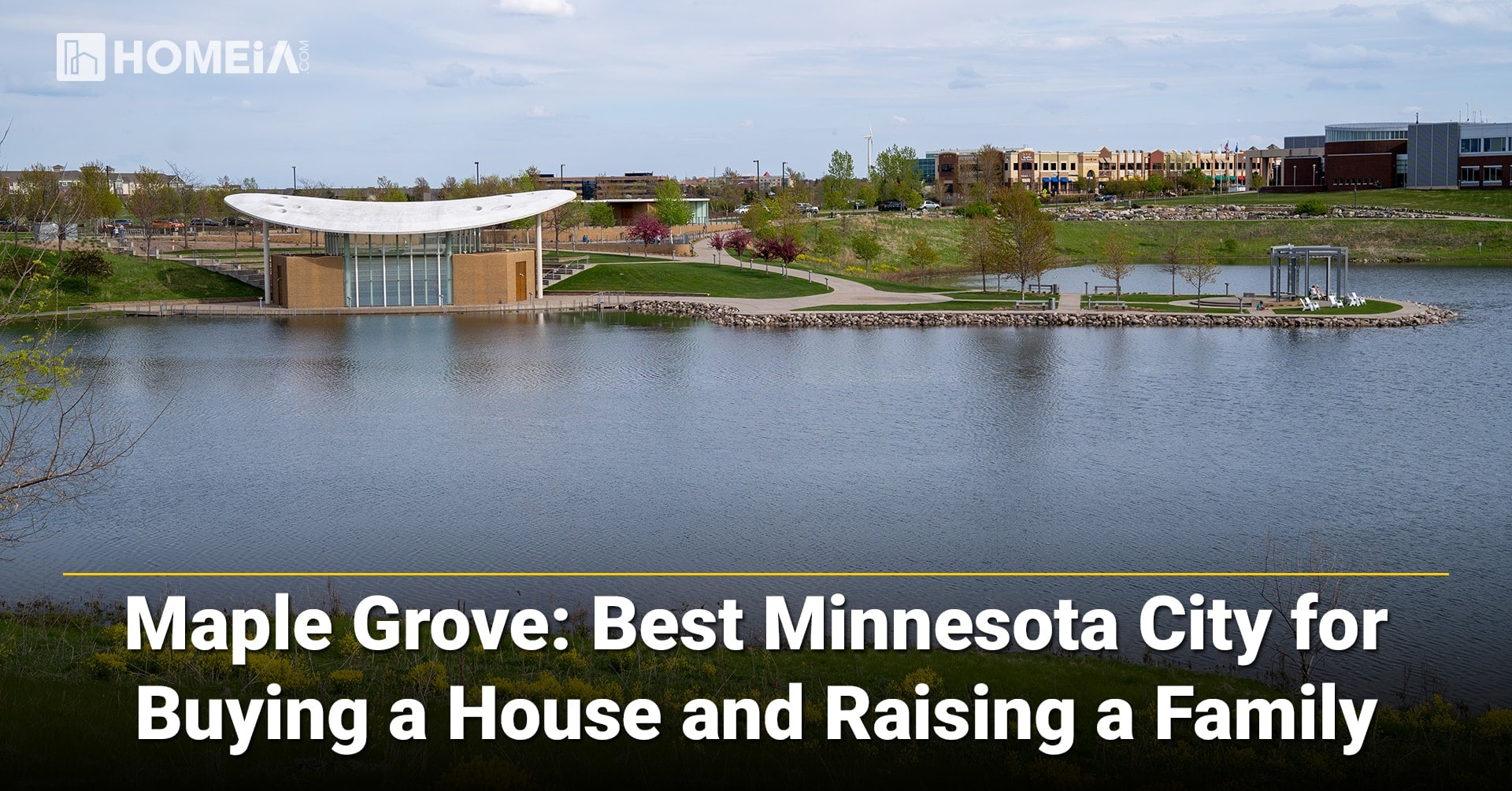Living in Minnesota
Local Editor(s)

Table of Contents:
- The Complete Guide to Cost of Living and Lifestyle
- 1. Minnesota Housing Costs: Affordable Homeownership
- 2. Minnesota Tax Structure: Progressive and Reasonable
- 3. Daily Living Expenses in Minnesota
- 4. Family Life in Minnesota: Top-Ranked for Families
- 5. Minnesota Transportation: Efficient and Affordable
- 6. Minnesota Job Market and Income Potential
- 7. Cost of Living Comparison: Minnesota vs. Other States
- 8. Minnesota Lifestyle: Four-Season Living
- 9. Best Places to Live in Minnesota for Different Needs
- Frequently Asked Questions About Living in Minnesota
The Complete Guide to Cost of Living and Lifestyle
Residents of Minnesota know that the Land of 10,000 Lakes offers an exceptional quality of life, affordable housing, and strong job markets without the premium costs of coastal states. The North Start State provides a high standard of living with reasonable expenses. This comprehensive Minnesota cost of living guide covers housing prices, taxes, daily expenses, and lifestyle factors to help you decide if Minnesota is your ideal home.
1. Minnesota Housing Costs: Affordable Homeownership

Minnesota real estate remains significantly more affordable than coastal states, making homeownership accessible for middle-income families. Understanding the state’s housing market trends helps potential residents find the best value for their budget.
A. Housing Costs of Major Cities
City | Median Home Price | 2-Bedroom Rent | 3-Bedroom Rent | HOA Fees |
|---|---|---|---|---|
| Minneapolis | $350,000 | $1,700/month | $2,400-$2,850 | $200-$400/month |
| St. Paul | $310,000 | $1,600/month | $2,200-$2,700 | $150-$350/month |
| Rochester | $305,000 | $1,450/month | $2,000-$2,500 | $100-$300/month |
| Duluth | $275,000 | $1,350/month | $1,800-$2,100 | $80-$200/month |
| Mankato | $265,000 | $1,250/month | $1,750-$2,000 | $75-$180/month |
B. Housing Strategies
Minnesota offers excellent first-time homebuyer programs and low-interest loans to help residents achieve homeownership. Utility costs are often bundled in suburban townhome developments, providing predictable monthly expenses. Winter heating costs can be significant, so energy-efficient upgrades like insulation and new windows offer long-term savings. Shared housing or duplex models are common and cost-effective options in urban centers.
The Pros and Cons of Living in Minnesota
Pros and Cons of Living in Minnesota include more than cold winters and hockey. Enjoy scenic lakes, great schools, a strong economy, and rich cultural life. Whether you’re drawn by the outdoors or career opportunities, Minnesota offers a high quality of life with both urban excitement and small-town charm.
2. Minnesota Tax Structure: Progressive and Reasonable
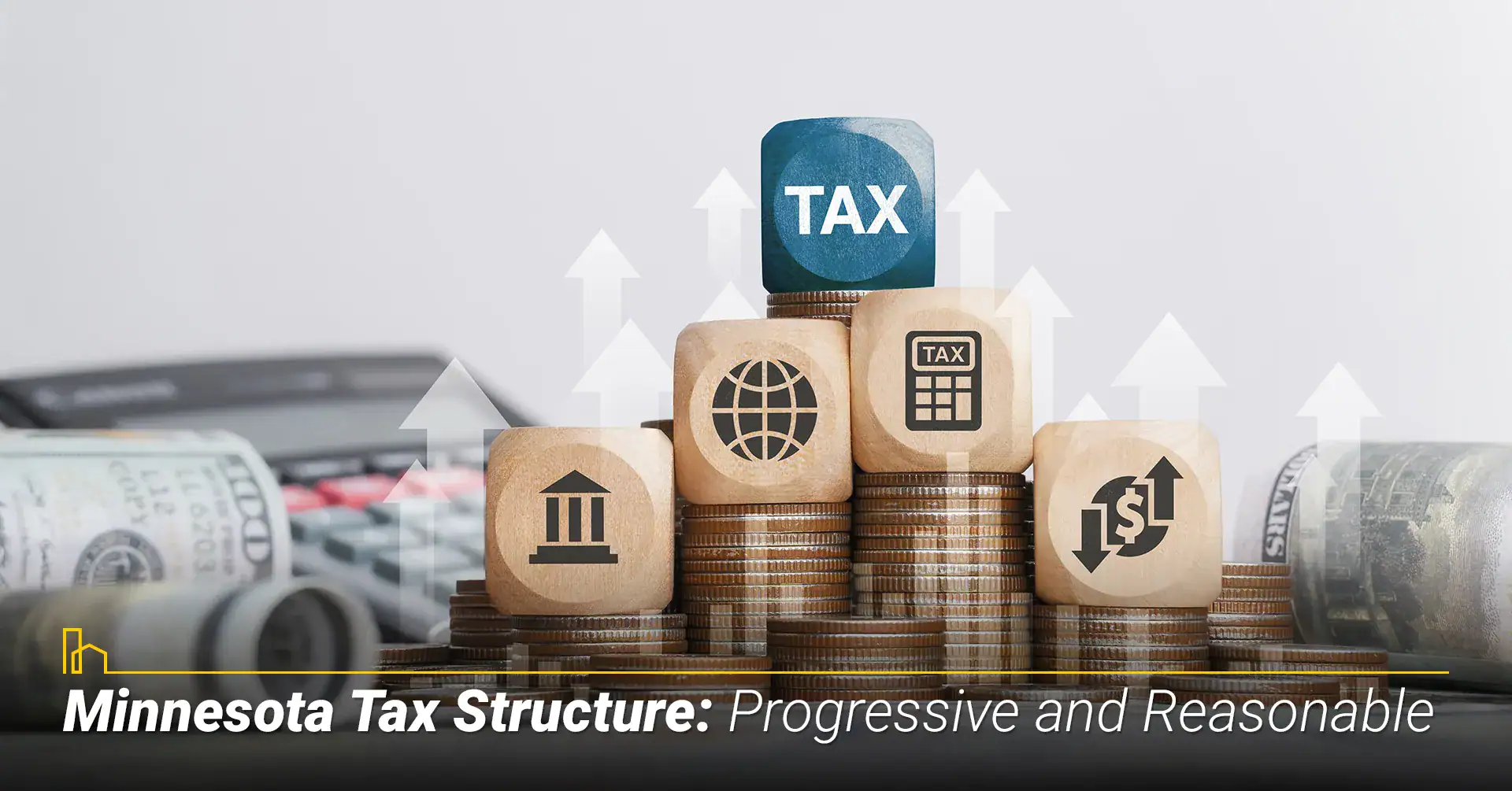
Minnesota has a progressive income tax system; it features moderately high property taxes but competitive overall rates compared to other states.
A. State Taxes Overview
Minnesota’s income tax ranges from 5.35% to 9.85% depending on your income level. Sales tax starts at 6.875% statewide, with additional local taxes reaching about 8.375% in the Twin Cities area. Property tax averages 1.05% effective rate, varying slightly by county. Minnesota also maintains an estate tax, unlike many other states.
B. Tax Comparison: Minnesota vs. Other States
Tax Type | Minnesota | Wisconsin | Iowa |
|---|---|---|---|
| Income tax | 5.35-9.85% | 3.54-7.65% | 0.33-8.53% |
| Sales tax avg. | 7.5% | 5.4% | 6.94% |
| Property tax | 1.05% | 1.85% | 1.53% |
| Estate tax | Yes | No | Yes |
What is It Like Living in Minneapolis?
You may have heard stories (the good, the bad and the unbelievable!) and you’re intrigued with finding more information on the city and all its wonders. You’ve come to the right place. Here, we’ll discuss some of the common themes about Minneapolis for standard of living, climate…
3. Daily Living Expenses in Minnesota
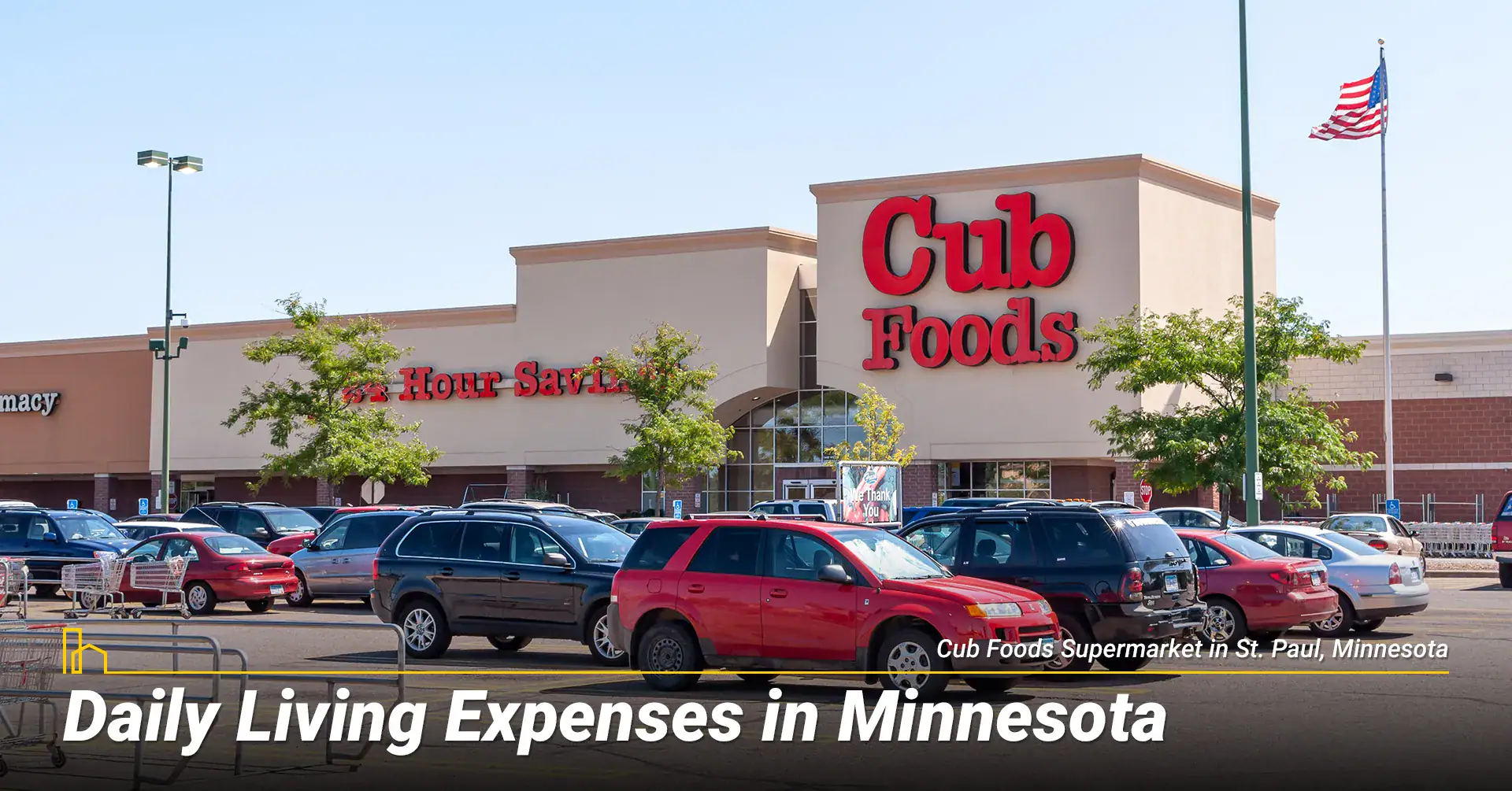
Minnesota living expenses are relatively equal to or fall below national averages, making daily costs manageable for most residents.
A. Monthly Living Costs Breakdown
| Expense Category | Minnesota Cost | National Comparison |
|---|---|---|
| Groceries (per person) | $300-$450/month | Near national average |
| Utilities (average) | $200/month | 3% below average |
| Utilities (winter) | $300-$350/month | Higher due to heating |
| Gas Prices | $3.60/gallon | Within 5% of national average |
| Healthcare (individual) | $450/month | 1% below average |
B. Cost-Saving Strategies for Minnesota Living
Budget-conscious residents shop at both major chains and affordable co-ops to reduce grocery costs. Energy-efficient home upgrades significantly reduce winter heating bills through improved insulation and windows. Many residents take advantage of state programs for weatherization assistance to lower utility costs. Healthcare quality ranks high nationally while maintaining reasonable premium costs.
What is It Like Living in St. Paul, MN?
This historic city has that and much more. It’s a beloved hometown for many with distinct neighborhoods, employment opportunity, dining and nightlife. In this article, we’ll discuss highlights for Saint Paul residents and guests regarding standard of living, housing, education, business, healthcare, weather and recreation…
4. Family Life in Minnesota: Top-Ranked for Families
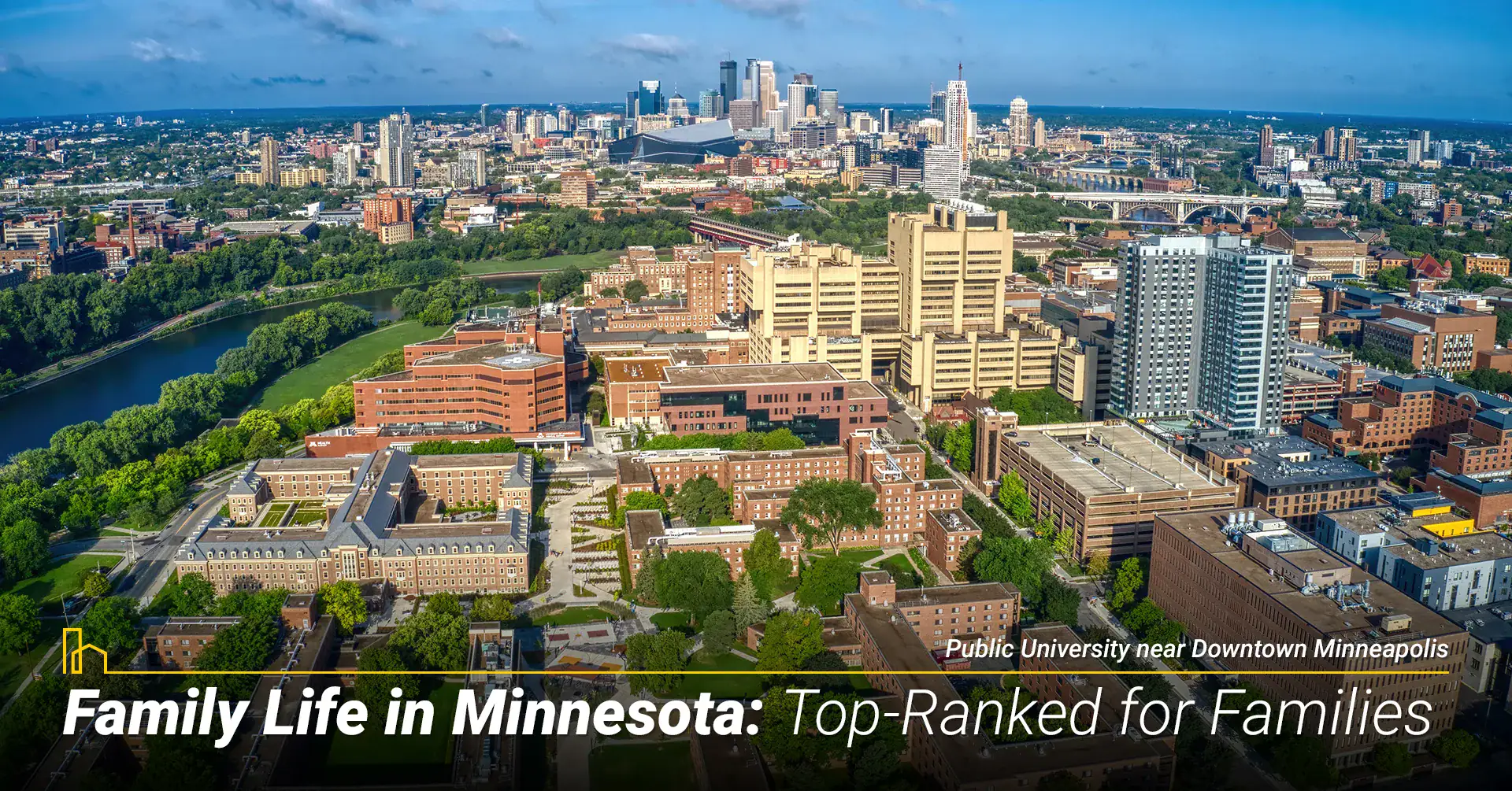
Minnesota consistently ranks among America’s best states for families due to excellent schools, safety, and healthcare access.
A. Education Excellence
Minnesota invests heavily in K-12 education with top-ranked public schools in suburbs like Edina, Eden Prairie, and Minnetonka. The state provides strong funding for educational programs and extracurricular activities. Public libraries are outstanding resources for families and communities across the state.
B. Childcare and Family Costs
| Family Expense | Minnesota Cost | Available Support |
|---|---|---|
| Childcare | $1,000-$1,400/month | State subsidies for qualifying families |
| After-school programs | Varies by district | Often included in school systems |
| Summer camps | $150-$400/week | Public and private options |
| Youth sports | $200-$800/season | Community leagues available |
Recommended for you
5. Minnesota Transportation: Efficient and Affordable
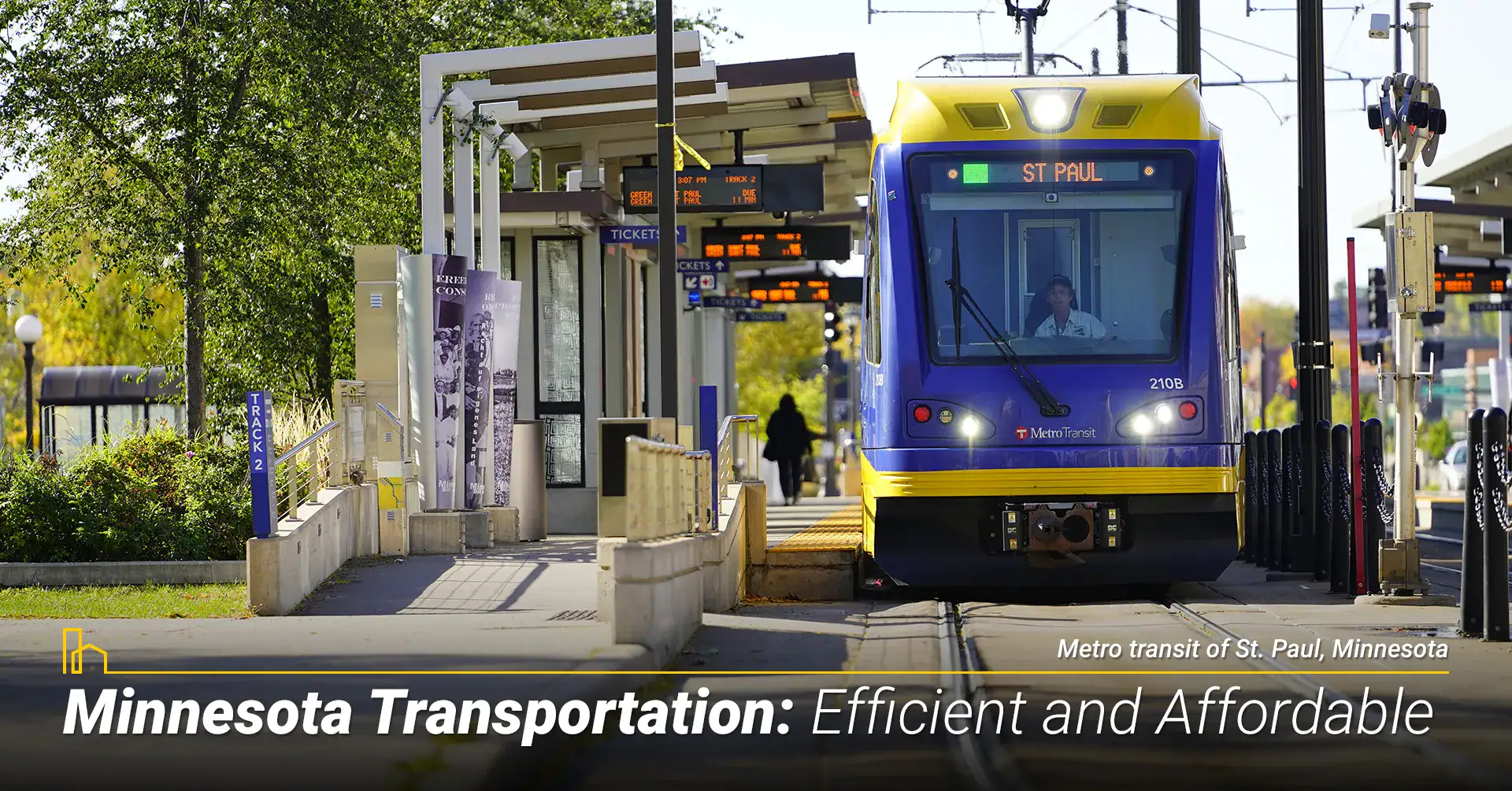
Transportation costs in Minnesota remain manageable. Additionally, the Twin Cities offers excellent public transportation, and the majority of residents statewide have reasonable commute times.
A. Vehicle-Related Expenses
| Transportation Cost | Minnesota Average | National Comparison |
|---|---|---|
| Auto insurance | $1,250/year | Below national average |
| Gas prices | $3.60/gallon | Near national average |
| Vehicle registration | Moderate | Competitive rates |
| Winter tires | $600-$1,200 | Additional seasonal cost |
B. Public Transit Options
| Transit System | Coverage Area | Monthly Pass Cost | Daily Fare |
|---|---|---|---|
| Metro Transit | Twin Cities | $76 | $2.50 |
| Rochester Public Transit | Rochester | $45 | $1.50 |
| Duluth Transit Authority | Duluth | $50 | $1.75 |
Average commute times in Minnesota are about 24 minutes, significantly lower than coastal metropolitan areas.
7 Key Factors to Know About Living in Edina, MN
Once a farming and milling community, Edina has blossomed into a preferred suburban city with all the most desired amenities. From upscale, boutique shopping and exquisite dining to consignment shops and casual bistros, residents and visitors are enamored with the…
6. Minnesota Job Market and Income Potential
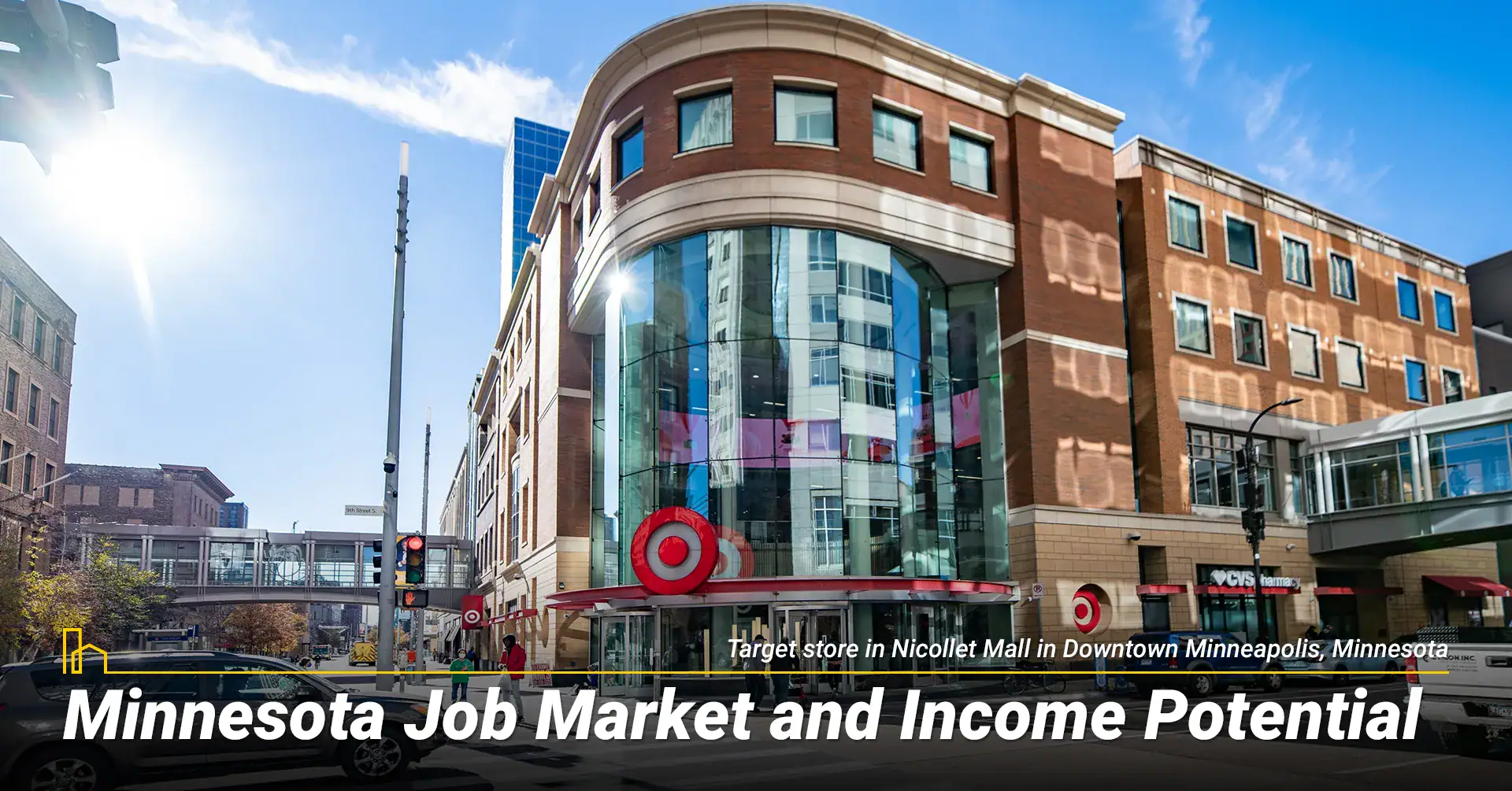
Minnesota’s economy features diverse industries with competitive wages and excellent benefits packages.
A. Income Statistics and Employment
| Income Metric | Minnesota | National Average |
|---|---|---|
| Minimum wage (large employers) | $10.85/hour | $7.25/hour |
| Minimum wage (small employers) | $8.85/hour | $7.25/hour |
| Median household income | $84,000 | $75,000 |
| Unemployment rate | Below national average | Varies |
B. Major Minnesota Employers and Industries
| Industry | Key Companies | Typical Salary Range | Growth Outlook |
|---|---|---|---|
| Healthcare | Mayo Clinic, UnitedHealth Group | $50,000-$150,000 | Strong |
| Manufacturing | 3M, Medtronic | $45,000-$120,000 | Stable |
| Retail/Corporate | Target | $40,000-$100,000 | Steady |
| Technology | Various companies | $60,000-$140,000 | Growing |
| Finance | Multiple firms | $50,000-$130,000 | Stable |
What is It Like Living in Rochester, MN?
It’s the 3rd largest city in the state, situated in southeastern Minnesota on the Zumbro River. Home of the renowned Mayo Clinic, the city is often noted on the “best cities” lists as one of the best overall or one of the best in the Midwest. With its scenic setting, outstanding healthcare and…
7. Cost of Living Comparison: Minnesota vs. Other States

Minnesota offers excellent value compared to other Midwest states with similar climates and family-friendly characteristics.
| Expense Category | Minnesota | Wisconsin | Iowa |
|---|---|---|---|
| Median home price | $315,000 | $285,000 | $210,000 |
| Income tax | 5.35-9.85% | 3.54-7.65% | 0.33-8.53% |
| Sales tax (avg.) | 7.5% | 5.4% | 6.94% |
| Gas price/gallon | $3.60 | $3.55 | $3.50 |
| Commute time | 24 minutes | 22 minutes | 19 minutes |
8. Minnesota Lifestyle: Four-Season Living
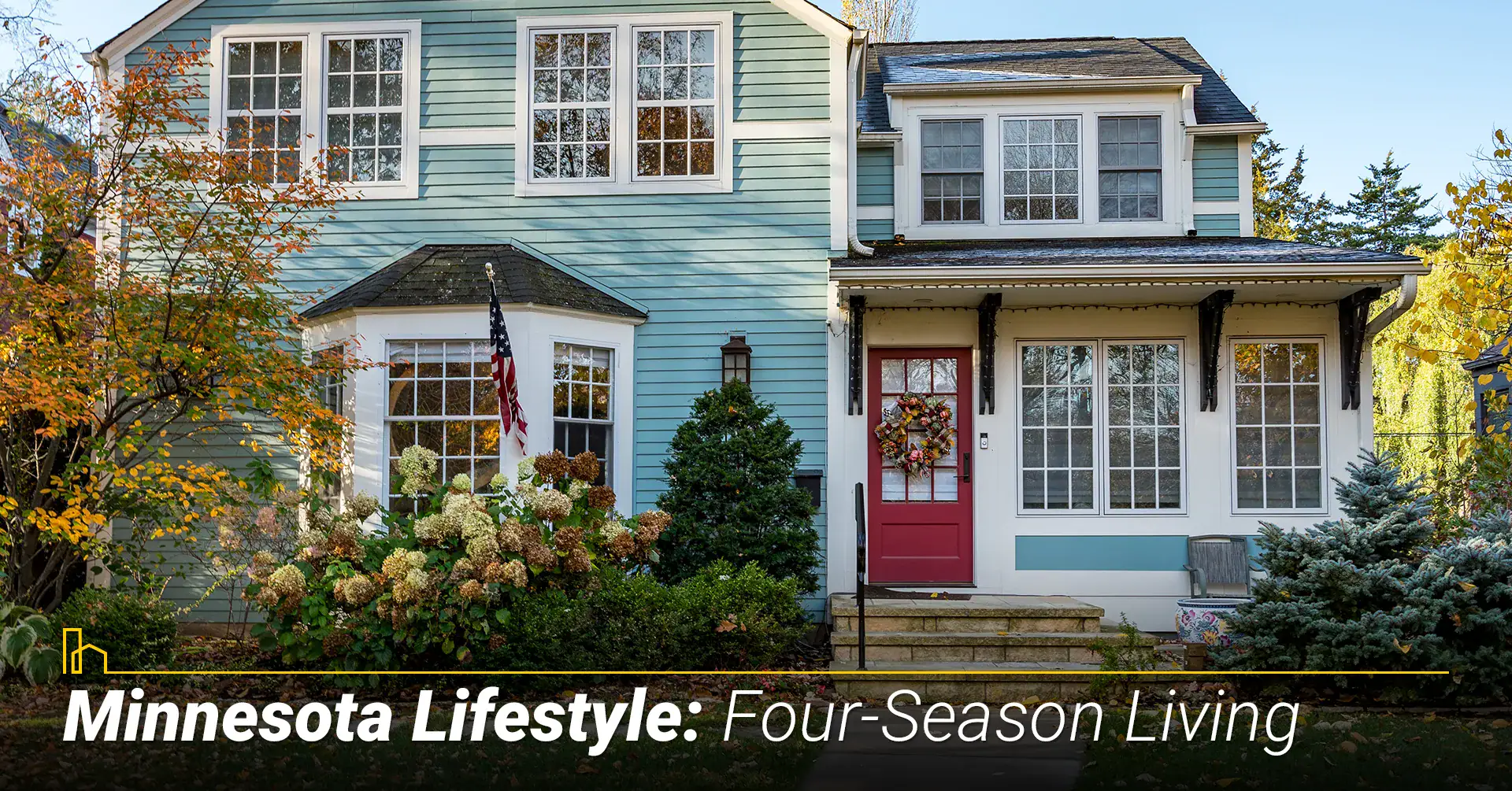
Minnesota lifestyle combines four-season outdoor recreation with cultural richness and community engagement, all while balancing challenging winter weather.
A. Lifestyle Advantages
Minnesota offers 75 state parks and extensive outdoor recreation opportunities year-round. The state maintains low crime rates, particularly in suburban areas, creating safe communities for families. Strong civic engagement and community involvement characterize Minnesota culture. Excellent public libraries and educational resources support lifelong learning. The Twin Cities provide world-class arts, music, and cultural attractions.
B. Winter Living Considerations
Minnesota winters can require significant adjustments in transportation, heating costs, and daily routines. Winter clothing and preparation are essential investments for new residents. Heating costs can increase utility bills by 50-75% during winter months. Snow removal and winter driving skills become necessary life skills. However, many residents embrace winter sports and outdoor activities as part of the lifestyle.
The 15 Budget Friendly Towns in Minnesota for Retirees
The cost of living in Minnesota varies by location and is highest in its large metro areas, but on the whole, it compares well to the coasts and to big cities. Each community in Minnesota has its own personality, and here we will introduce you to 15 of the best options for retiring in the North Star State…
9. Best Places to Live in Minnesota for Different Needs
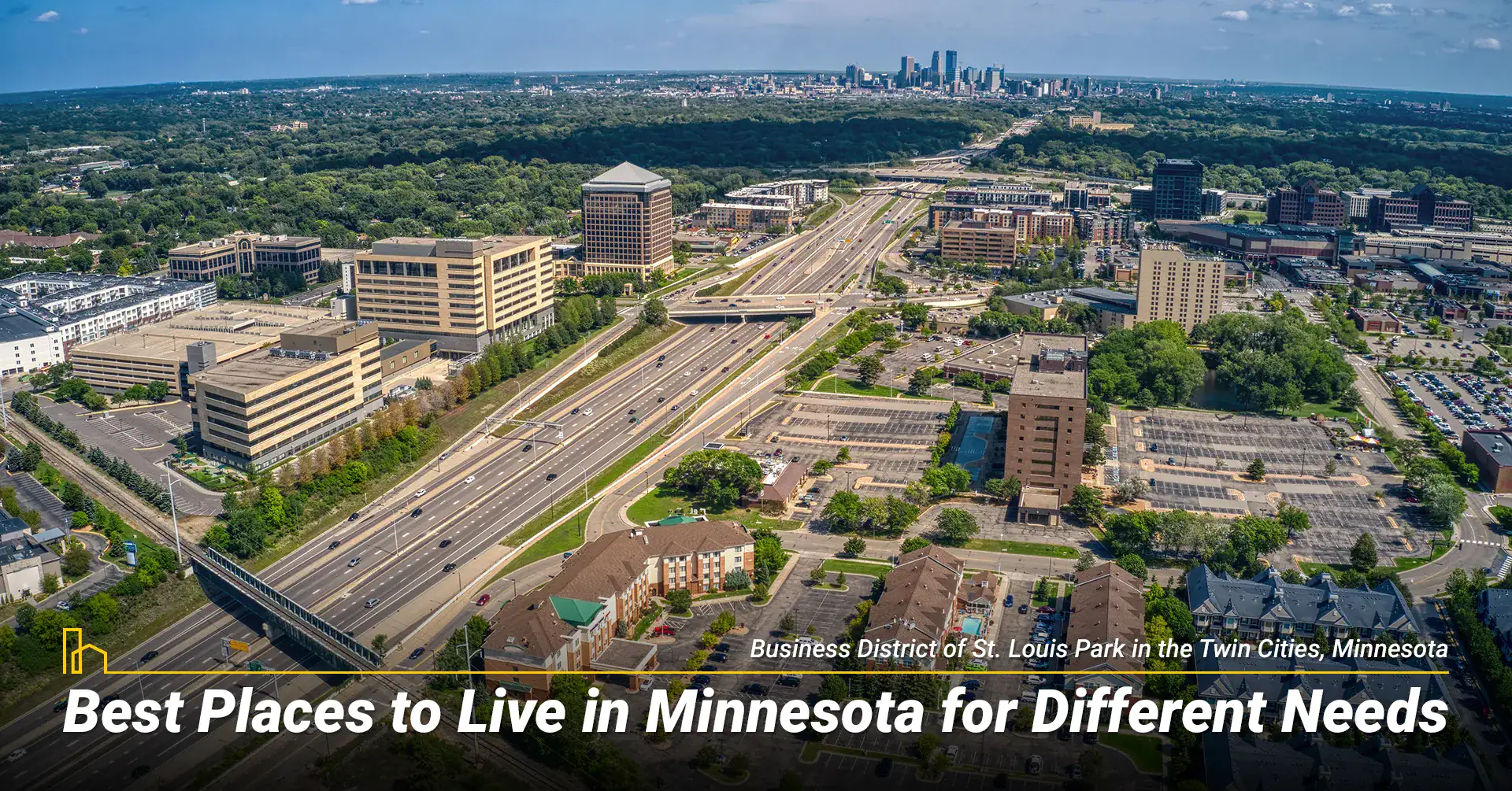
A. Family-Friendly Communities
| Community Type | Best Cities | Median Home Price | Key Benefits |
|---|---|---|---|
| Suburban family | Edina, Eden Prairie, Minnetonka | $400,000-$600,000 | Top schools, safety |
| Affordable family | Mankato, St. Cloud, Duluth | $250,000-$300,000 | Good schools, lower costs |
| Urban family | Minneapolis, St. Paul | $350,000-$450,000 | Cultural amenities, jobs |
B. Young Professional and Retiree Options
Vibrant downtown Minneapolis and St. Paul offer urban living with cultural attractions and career opportunities. Rochester provides excellent healthcare access and stable employment through Mayo Clinic. Duluth residents enjoy scenic beauty and outdoor recreation at affordable prices. Small towns throughout Minnesota thrive with tight-knit communities and lower living costs.
Conclusion: Making Minnesota Living Work for You
Minnesota’s cost of living is 5% lower than the national average, with housing costs 16% below average, making it attractive for families and professionals seeking quality without premium prices. Success depends on preparing for winter heating costs that can increase utility bills by 50-75% and embracing the seasonal lifestyle.
Life in Minnesota includes an appealing balance of exceptional quality of life with reasonable costs, ideal for families looking for top-rated schools, professionals building careers with major employers, and retirees wanting excellent healthcare access. While winters might require an adjustment, residents enjoy clean air, low crime rates, and strong community engagement throughout the year.
With proper planning and realistic expectations about seasonal expenses, Minnesota living offers both financial sustainability and personal fulfillment.
Recommended for you
Frequently Asked Questions About Living in Minnesota
1. How does Minnesota’s cost of living compare to other states?
Minnesota’s overall cost of living is approximately 5% lower than the national average. Housing costs are about 16% below average, making homeownership accessible for middle-income families. While some expenses like winter heating are higher, the overall financial picture remains favorable compared to coastal states.
2. How harsh are Minnesota winters really?
Minnesota winters can be genuinely challenging, with temperatures often below zero and significant snowfall. However, residents adapt with proper clothing, energy-efficient homes, and winter activities. Many Minnesotans embrace outdoor winter sports like skiing, ice fishing, and hockey as part of their lifestyle.
3. Is the job market strong in Minnesota?
Minnesota maintains a diverse and stable job market with major employers like Mayo Clinic, Target, 3M, and UnitedHealth Group. The median household income of $84,000 exceeds the national average, though about 19% of Twin Cities workers struggle to find living-wage employment.
4. What are the best places to live in Minnesota for families?
Suburban communities like Edina, Eden Prairie, and Minnetonka offer top-ranked schools and family amenities. For more affordable family living, consider Mankato, St. Cloud, or Duluth, which provide strong schools and lower housing costs while maintaining a high quality of life.
5. How much should I budget for heating costs in winter?
Winter heating can increase utility bills from an average of $200/month to $300-$350/month. Energy-efficient upgrades like improved insulation and new windows can significantly reduce these costs. Many residents budget an extra $100-$150 monthly during winter months.
4 Best Places to Live in Minnesota
Bordering Canada and the Great Lakes is a state fondly dubbed as the “North Star State” and “Land of 10,000 Lakes.” The state has a lot of lakes sprawled across its more than 86,000 square mile area. In a comprehensive study of cities, Minnesota is the number one state for raising a family because of its high median income, affordable cost of living and exceptional education services…
6. Does Minnesota have good public transportation?
Public transportation is excellent in the Twin Cities area, with Metro Transit offering bus and light rail service throughout the region. Outside the Twin Cities, most areas require personal vehicles for daily transportation, though smaller cities like Rochester and Duluth have local transit systems.
7. What industries are strongest in Minnesota?
Healthcare dominates Minnesota’s economy, anchored by Mayo Clinic and UnitedHealth Group. Manufacturing remains strong with companies like 3M and Medtronic. The retail sector, led by Target’s headquarters, and growing technology companies provide diverse employment opportunities.
8. How do Minnesota taxes affect take-home pay?
Minnesota’s progressive income tax ranges from 5.35% to 9.85%, higher than some states but reasonable given the services provided. The combination of income, sales, and property taxes creates a moderate overall tax burden compared to other high-quality-of-life states.
9. What recreational opportunities does Minnesota offer?
Minnesota features 75 state parks, over 10,000 lakes, and extensive bike trails providing year-round outdoor recreation. Many ski, snowmobile, and ice fish in the winter, and summer brings an abundance of opportunities for hiking, boating, and camping in warmer weather. And no matter the season, the Twin Cities provide world-class cultural attractions and entertainment for residents of all ages.
10. Is Minnesota a good place to retire?
Minnesota offers excellent healthcare, low crime rates, and strong community engagement making it attractive for retirees. However, winter weather and heating costs may be challenging for some seniors. Many retirees choose to spend winters in warmer climates while maintaining Minnesota residency for summer months.
8 Best Cities for Buying a House and Raising a Family in Minnesota
While everyone in Minnesota shares accesses to the great outdoors, four distinctly enjoyable seasons, and a friendly Midwestern vibe, each community has its own personality. Here are our views of the Top 8 Cities for family life in Minnesota. With a variety of personalities and attractions…
Local Editor(s)
What is It Like Living in Minneapolis?
Whether you’re thinking of relocating for school, work or retirement, Minneapolis offers something for everyone. You may have heard stories (the good, the bad and the unbelievable!) and you’re intrigued…
What is It Like Living in St. Paul, MN?
Living in St. Paul, Minnesota, comes with its own unique characteristics and factors. St. Paul, the lesser-known twin of the vibrant Minneapolis, offers a unique and charming living experience that…
What is It Like Living in Rochester, MN?
Rochester is the third largest city in the state, situated in southeastern Minnesota on the Zumbro River. Home of the renowned Mayo Clinic, the city is often noted on the…
7 Key Factors to Know About Living in Edina, MN
Once a farming and milling community, Edina MN has blossomed into a preferred suburban city with all the most desired amenities. From upscale, boutique shopping and exquisite dining to consignment…
7 Factors Rank Minnetonka as one of the Best Cities in Minnesota
Minnetonka is an attractive midwestern city for people of all ages located 10 minutes west of Minneapolis. The city has much to offer for families, singles and seniors—and all within…
Cheapest Places to Live in Minnesota
Many residents love Minnesota for its natural beauty, vibrant communities, and a strong sense of Midwestern hospitality. And while some may think that living in such a place means paying…
8 Best Cities for Buying a House and Raising a Family in Minnesota
The Land of 10,000 Lakes has a loyal and growing fan base. Some are born and raised Minnesotan and choose to stay. Others leave, but make their way back when…
12 Key Factors You Should Know Before Living in Mankato
Mankato is a bustling retail and entertainment hub with the feel of a small town where everyone knows your name—in a good way. Neighborhoods feature cozy homes with well-kept yards.…
What is It Like Living in St. Paul, MN?
Living in St. Paul, Minnesota, comes with its own unique characteristics and factors. St. Paul, the lesser-known twin of the vibrant Minneapolis, offers a unique and charming living experience that sets it apart. This city is full of tradition, culture…
The Magic of a Minnesota Christmas
Christmas is a magical time across the country—and Minnesota is no exception. The holiday is a joyous Christian celebration of the birth of Jesus, the Son of God, to Mary and Joseph long ago in Bethlehem. The unique sequence of…
4 Best Places to Live in Minnesota
Those who are looking for the best places to live in Northern America often find Minnesota ranked among the top 10 states in the U.S. "Home is where the heart is," is how the age-old adage goes. But where is…
7 Key Factors to Consider Before Moving to Orono, Minnesota
Orono, Minnesota may not be as widely known or recognized as some of the first-tier suburbs, but once you’ve discovered this gem, you’ll likely agree that it is an amazingly beautiful place to live. Residents enjoy scenic parks and trails…
7 Factors Rank Minnetonka as one of the Best Cities in Minnesota
Minnetonka is an attractive midwestern city for people of all ages located 10 minutes west of Minneapolis. The city has much to offer for families, singles and seniors—and all within a short distance of the amenities of the Twin Cities…

 Verified
Verified


 Considering
Considering

